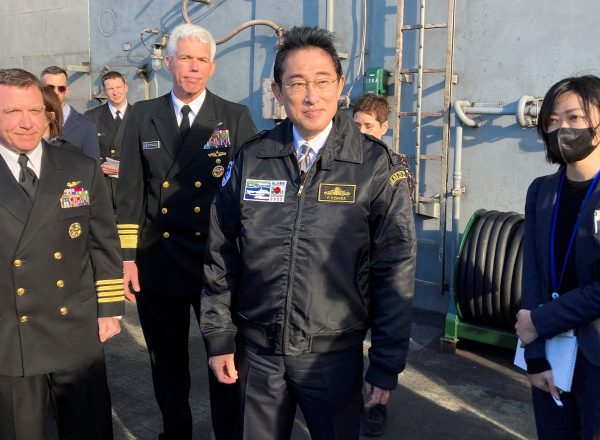As the Kishida government has rapidly progressed the country’s security reforms, there are expectations and fears that Japan may be seeking to cast off its previous self-restraint and start formulating a realist, more forward-leaning grand strategy.
Throughout the post-war era to the present day, Japan has continued to maintain a relatively restrained security posture out of recognition of its wartime and colonial transgressions, while relying on the US security guarantee under the US–Japan Security Treaty. It continues to maintain the Article 9 peace clause of its constitution renouncing the use of force as a means of settling disputes and ostensibly limits its defence capabilities to equipment that serves strictly defensive purposes.
In the immediate aftermath of the Second World War, Japan’s military self-restraint was born out of the necessity of its situation. The US-led Allied Powers implemented a program of democratisation and demilitarisation to prevent Japan from ever waging a war of aggression again. Japanese public opinion favoured the maintenance of Article 9 despite the emergence of Cold War pressures, both internationally from the United States and domestically from conservative nationalist factions within the ruling Liberal Democratic Party, for Japan to undertake more substantial rearmament in the fight against communism.
The devastation of the war meant that Japan sought to focus its limited resources on rebuilding its economy. The necessary rebuilding was vast. In addition to the atomic bombing of Hiroshima and Nagasaki, the Allied firebombing campaign across Japan destroyed, by one estimate, 40 per cent of infrastructure across 66 target cities.
The strategy of reliance on the United States, limiting its military posture to light re-armament through the establishment of the Japan Self-Defense Forces (SDF), and focusing on economic growth came to be known as the Yoshida Doctrine after the then prime minister Shigeru Yoshida. It was a great success as Yoshida’s proteges helped Japan realise its rapid economic growth, which saw Japan overtake West Germany to become the second largest economy in the free world in 1967.
In the 1970s, Japan’s economic heft, coupled with still fresh memories of the war, posed a new problem. Despite achieving its principal original goal, Japanese leaders decided to maintain the Yoshida Doctrine and the US–Japan alliance to reassure the region that it had no plans to return to the imperialism and militarism that led it down the path of aggressive war. This promise not to become a great military power was enunciated in the Fukuda Doctrine in 1977.
The end of the Cold War once again opened questions about the future of the Yoshida Doctrine and the US–Japan alliance. Uncertainty surrounding the rise of China, the possibility of a crisis across the Taiwan Strait and North Korea’s missile and nuclear weapons development, as well as continued public support for the maintenance of Article 9 and avoiding SDF entanglement in combat missions, meant that Japanese security reforms were incremental and positioned within the framework of the post-war constitution. But the series of incremental reforms have, over time, amounted to significant changes expanding the roles and functions of the SDF within the US–Japan alliance framework.
As Yusuke Ishihara explains in this week’s lead article, ‘the Yoshida Doctrine is no longer fit to understand Japan’s grand strategy’. As Japan’s economy has stagnated and as it is no longer the biggest economy in the region, ‘Japanese leaders’ imagination about their available military options has stretched’. At the same time, ‘Japanese leaders’ imagination about Japan’s broader strategic options has shrunk. Unlike during Japan’s economic ascent, no members of the Japanese governing party are entertaining departing from the defence treaty with the United States’.
As Japan gradually moves away from the Yoshida Doctrine, it is unclear what shape Japan’s new emergent grand strategy will take. On the one hand, Japan and the United States maintain a shared interest in deepening the alliance and increasing their cooperation, coordination and deterrence power to prevent unilateral changes to the status quo.
On the other hand, when it comes to the question of managing the rise of China, their interests diverge quite sharply. While the US is focused on the rise of China from the perspective of maintaining its global and regional primacy, Japan’s geographic proximity to China and its stake in an open global economy mean it would like to manage tensions in a more studious way. As Ishihara explains, ‘as a close ally, Tokyo has also been voicing its concerns about Washington’s democracy-versus-autocracy narrative and signalling its reservations about the US-led Indo-Pacific Economic Framework’.
Japan’s new grand strategy has to embrace that second path, and it’s a path the policy leadership is yet to map.
The EAF Editorial Board is located in the Crawford School of Public Policy, College of Asia and the Pacific, The Australian National University.

